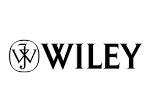Resource information
Reports of positive or neutral effects of grazing on plant species richness have prompted calls for livestock grazing to be used as a tool for managing land for conservation. Grazing effects, however, are likely to vary among different response variables, types, and intensity of grazing, and across abiotic conditions. We aimed to examine how grazing affects ecosystem structure, function, and composition. We compiled a database of 7615 records reporting an effect of grazing by sheep and cattle on 278 biotic and abiotic response variables for published studies across Australia. Using these data, we derived three ecosystem measures based on structure, function, and composition, which were compared against six contrasts of grazing pressure, ranging from low to heavy, two different herbivores (sheep, cattle), and across three different climatic zones. Grazing reduced structure (by 35%), function (24%), and composition (10%). Structure and function (but not composition) declined more when grazed by sheep and cattle together than sheep alone. Grazing reduced plant biomass (40%), animal richness (15%), and plant and animal abundance, and plant and litter cover (25%), but had no effect on plant richness nor soil function. The negative effects of grazing on plant biomass, plant cover, and soil function were more pronounced in drier environments. Grazing effects on plant and animal richness and composition were constant, or even declined, with increasing aridity. Our study represents a comprehensive continental assessment of the implications of grazing for managing Australian rangelands. Grazing effects were largely negative, even at very low levels of grazing. Overall, our results suggest that livestock grazing in Australia is unlikely to produce positive outcomes for ecosystem structure, function, and composition or even as a blanket conservation tool unless reduction in specific response variables is an explicit management objective.



